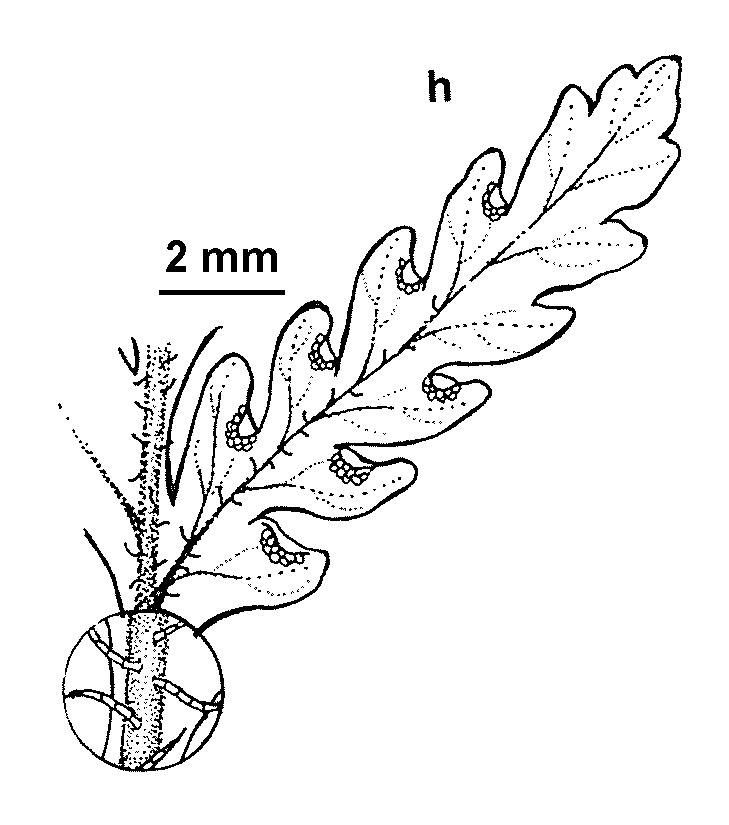Hypolepis elegans subsp. elegans
Rhizome up to 5 mm diam., covered with pale-brown hairs. Fronds erect, to 120 cm long. Stipe long, 4–8 mm diam., dark chestnut-brown at base, lighter above, densely covered at base with fine, colourless, non-glandular hairs up to 0.5 mm long, sparsely hairy above, slightly rough. Lamina 4–5-pinnate, broadly triangular, usually broader than long, mid-green to dark green; hairs on both surfaces colourless or brown-tinged, stiff, curved, sharply pointed, non-glandular. Rachises chestnut-brown at base, yellow-brown or green at apex, covered by hairs similar to those of lamina. Pinnules curved-oblong; bases decurrent, forming wing on rachis; margins crenate to roundly lobed; apices obtuse or acute; veins several per lobe. Sori near margin, protected from earliest stages by obvious reflexed, incised, membranous flap.
Also Qld, NSW (including Lord Howe Is.). South-west Pacific islands. In Australia, known only from three mainland collections: Atherton Tableland (Qld), Richmond River (NSW) and a solitary Victorian record (based on a 1909 specimen labelled simply 'Wilsons Promontory').
A new subspecies of H. elegans has been recently described from the Caroline Islands, about 2000 km north of Papua New Guinea. Hypolepis elegans subsp. carolinensis Brownsey (1987) has extremely long lamina hairs (up to 2 mm), generally smaller fronds and slightly longer spores. Hypolepis elegans is characterized by its large fronds, thick stipes, conspicuously reflexed, membranous indusia, and slightly curved, non-glandular hairs on the lamina.
Entwisle, T.J. (1994). Ferns and allied plants (Psilophyta, Lycopodiophyta, Polypodiophyta). In: Walsh, N.G.; Entwisle, T.J., Flora of Victoria Vol. 2, Ferns and Allied Plants, Conifers and Monocotyledons, pp. 13–111. Inkata Press, Melbourne.
 Spinning
SpinningBrownsey, P.J. (1987). A revision of the fern genus Hypolepis (Dennstaedtiaceae) in the Malesian and Pacific region.. Blumea 32: 227–276.


